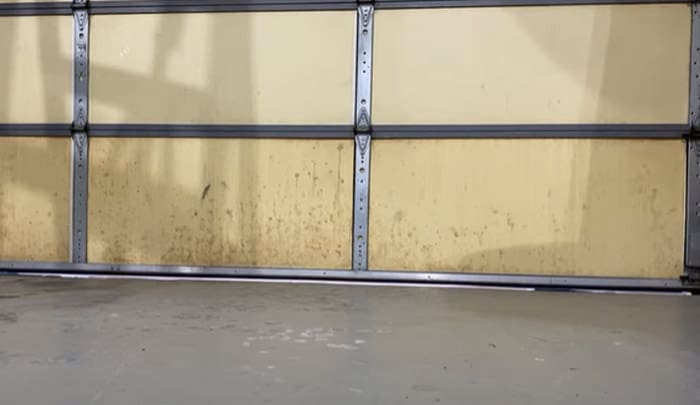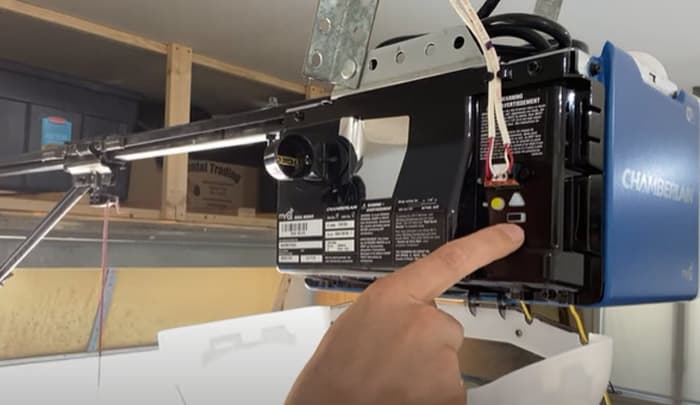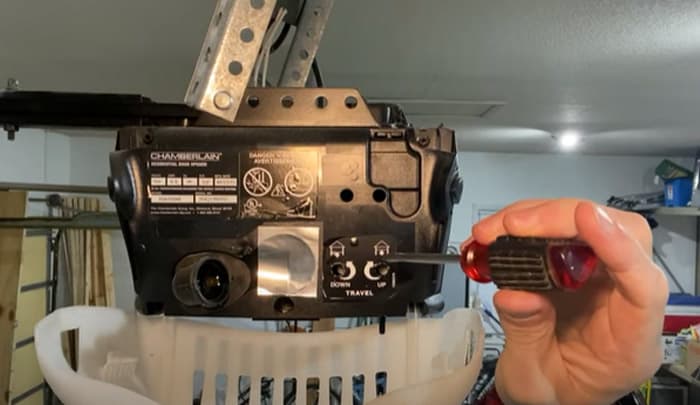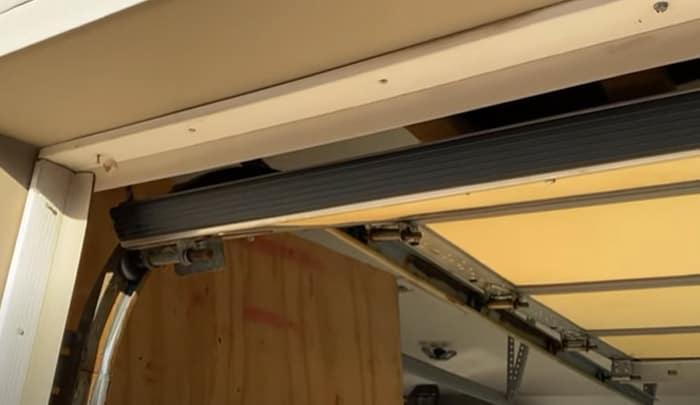Are you the unfortunate owner of a garage door that keeps slamming shut? Are you sick and tired of it slamming every time you enter and exit the garage door? Are you sick and tired of it slamming shut every time you enter and exit the garage? Unless it’s traditional and part of a garage door performance art (yes, it’s a real thing), it can be incredibly irritating, and might even be damaging your physical and mental health over time. Fortunately, there are solutions to the problem, and this blog post will provide you the actionable steps you need to take to take control of those errant door speeds and stop the incessant slamming for good.
Common Fixes For Garage Doors Slamming Shut
The jarring sound of a slamming garage door is a source of frustration for many homeowners and offers an unpleasant surprise when entering or exiting the garage. But why do garage doors slam shut in the first place? There are several reasons that can cause a garage door to abruptly shut, many of which can be medically dangerous and pose extensive property damage.
Reason #1
Some garage doors may close quickly due to weight imbalances between the two sides of the door. If one side is heavier than the other, it can pull the entire door shut more rapidly than intended. Additionally, age can play an integral role in whether your garage door suddenly slams shut. If you have an older model, it may require more maintenance to ensure its components are adequately lubricated on a regular basis. Regular maintenance can also help cool your garage and improve its overall functionality. Without this routine upkeep, the smoothly-lubricated pulleys, rollers, and chains may collect dust and debris causing them to jam easily. Furthermore, broken or malfunctioning sensor photo-eyes can also be responsible for shutting doors quickly as these sensors detect obstructions beneath the door and stops it from coming down further.
Reason #2
Tampering with your limit settings will also cause your door to shockingly slam shut at higher than expected speeds. If either spring’s tension exceeds manufacturer specifications, your garage door could suddenly fall too quickly. Many homeowners mistakenly attempt to adjust their own limit settings without fully understanding how they work or how these settings impact each other. A qualified technician should always be consulted before attempting to adjust any limits or springs tension in order to prevent any potential problems.
The findings above demonstrate why garage doors slam shut so quickly when left unchecked or improperly serviced. Fortunately, there are a few steps you can take to alleviate slamming doors caused by malfunctioning components or improper settings. Read on for information about the sensor reversal mechanism that helps control quick drops in your garage door opener system.

The Sensor Reversal Mechanism
“The Sensor Reversal Mechanism” is an effective solution for preventing a garage door from closing too hard and slamming shut. This mechanism utilizes two infrared sensors placed on either side of the garage door that interact with one another, sending an alert signal when the door starts to close too quickly. This alert is then sent to the unit controlling the door, forcing it to automatically reverse the force of the closure, thereby stopping the door from closing completely.
The main benefit of this mechanism is that it can be easily integrated into an existing system and requires no maintenance beyond replacing the batteries once per year. In addition, the sensor reversal allows you to customize the level of sensitivity so that your garage door will shut softly every time.
However, there are also drawbacks to this system. If the batteries in either of the sensors run out, they will not be able to relay a signal and thus, will not provide any protection against a hard closure. Additionally, due to their small size, these sensors can be easily knocked off or blocked, potentially resulting in the same issue.
Overall, while this method is effective when used correctly, it’s important to take additional measures like regularly testing the effectiveness of your sensor reversal system and ensuring that both sensors are placed securely in order to avoid any mishaps. With that said, let’s discuss how you can prevent an accidental slam in your garage.
An Accidental Slam
An accidental slam can happen when the balance of your garage door is off. In this case, the force on the door can pull it shut suddenly and with more force than usual. To some degree, slamming is common in many garage doors as the door reaches its closed state.
In debates over whether or not an accidental slam poses a safety risk, there are two sides to the issue. Some individuals argue that an accidental slam does not pose a safety threat since most doors are designed for two to four slams per opening/closing cycle. On the other hand, some individuals counter that any sudden movement of a garage door could potentially harm someone or something inside the garage, particularly if children and/or pets are around.
Fortunately, regardless of safety concerns, all homeowners can take measures to reduce their risk of an accidental slam by making sure that their garage door is properly balanced and equipped with functional sensors. The next section will help diagnose potential issues and provide tips on how to fix a garage door that slams shut.
More Fixes For a Garage Door That Slams Shut
When a garage door slams shut, the first step is to check to make sure that there are no obstructions in the way. If there are any objects that may be blocking the path of the door when it closes, these should be removed right away. If there are no obstructions, then the issue likely lies within one or more of the components of the door.
Some common causes of a garage door slamming shut include an improperly adjusted force setting, worn springs or cables, or broken hinges. It is necessary to carefully inspect all parts of the door before attempting to adjust any settings on their own. Many garage doors come with safety features designed to stop them from slamming shut in case of sudden impact. To adjust this feature, consult the owner’s manual and locate the appropriate force setting dialer. The recommended setting can usually be found printed in the manual.
In some cases, adjusting this setting will not solve the problem and further investigation will be required. If this is the case, it may be necessary to replace certain components such as springs or cables if they have become worn down over time. Broken hinges may also need to be replaced if they have caused the door to become misaligned and create an uneven surface resulting in its slamming shut when closing.
It is generally best practice to leave repairs relating to springs, cables and other mechanics of a garage system to professionals due to their complexity and potential risks associated with a faulty installation or incorrect adjustment. Although one can attempt minor adjustments on their own such as changing a force setting dialer they should never attempt any work that goes beyond simple adjustment as this can be dangerous due to its potentially hazardous nature.
With these possible solutions in mind, it is time for homeowners to move deeper into troubleshooting a garage door that slams shut by checking the sensors which will be discussed in the next section.

Check the Sensors
When your garage door slams shut, it’s likely due to misaligned or poorly functioning sensors. Sensors are an important part of the garage door system, automatically stopping and reversing the door if it senses a person or object in its way. Checking the sensors should be your first step when troubleshooting a slamming door.
To begin, check that your sensors are correctly aligned by pointing them directly at one another across the open doorway. Make sure that nothing is blocking either side of the path from one to the other and that no dust is preventing them from effectively communicating with each other. Also, ensure that both sensors are securely attached to their respective frames and free of debris or dirt buildup around the lenses.
Next, try to engage your garage door opener while standing in between the two sensors. If it opens fully without interruption, then you know that they’re properly communicating with each other and closing too quickly may be caused by sensitivity or force settings. However, if the door stops immediately or reverses course once you pass through, then one of these components may need replacing or cleaning as a result of improper function.
Whether replacing, cleaning, or just ensuring alignment, checking your garage door’s sensors is essential to stopping a slamming garage door. Once you have ensured proper functioning of your sensors, move onto the next section about troubleshooting force settings to ensure you can make the appropriate adjustments for safe and reliable operation.
Key Points
When a garage door slams shut, it is usually due to misaligned or malfunctioning sensors. In order to troubleshoot this issue, the first step should be to check alignment and ensure that nothing is blocking either side of the path from one sensor to another. To test any potential abnormalities, try passing through the sensors while engaging the door opener. If the door fully opens without interruption, then sensitivity or force settings may need adjusting. However, if the door stops or reverses as you pass through, then one of the components may need replacing or cleaning. After verifying proper functioning of sensors, adjustments can be made for safe and reliable operation.
Troubleshooting Force Settings
Troubleshooting Force Settings is a critical part of making sure your garage door does not slam shut. Ideally, you should adjust the force setting before opening and closing the door in order to prevent any unexpected movements that could cause it to close too quickly. Depending on the weight of the door, you may need to make adjustments to the settings to ensure it closes smoothly.
To adjust the force settings, you will need a screwdriver or an adjustable wrench and access to the back of your opener motor. Factors such as the direction of your door’s travel, temperature changes, and size will influence how forceful or gentle you need to make your force settings. Many people debate between setting higher or lower forces; experts generally agree that lower forces are better for a more comfortable performance, while higher forces can prevent breakage and wear-and-tear on components. However, whichever one you choose depends on your individual circumstances so testing them both is recommended until you find what works best for you.
Once you have adjusted your forces accordingly, always remember to check the functionality after each use by using the manual release lever. This ensures the door is operating correctly and can raise any red flags if something is off.
Now that your force settings are correctly adjusted, it’s time move onto adjusting the release tension in order to properly secure your garage door.
Adjust the Release Tension
Adjusting the release tension of your garage door is a quick and effective way to stop it from slamming shut. The garage door spring has an internal release tension part that is connected to the opening mechanism. This particular tension plays a crucial role in keeping the door open at certain points in time. Thus, if the release tension needs to be adjusted, it can be done so rather easily with just a few home tools.
However, adjusting the release tension may not be required for every type of garage door. Therefore, before jumping into this task it is important to first identify if the door in question requires such an adjustment. If it does not, then moving forward with this step is not necessary and additional steps can be explored instead. On the other hand, if it is deemed as necessary to proceed in making adjustments to the release tension, then several tools are required such as a clamp and a pair of locking pliers.
Once all items needed have been gathered, follow a step-by-step guide on how to adjust the release tension including: how to loosen or tighten components, familiarizing yourself with safety guidelines, and understanding what other possible adjustments need to be made in association with the task at hand. Once everything has been completed, you should feel free to perform trial tests by attempting to open/close your garage door manually several times or run through its programmed settings via remote or computer application – whichever works best for you!
By adjusting your garage door’s release tension you can easily stop it from slamming shut without having to take extreme measures such as installing specific pieces of replacement equipment. Therefore, consider this method first before looking into any further options!
Next we will discuss additional steps one can take to ensure that their garage door continues working properly and no longer slams shut unexpectedly.

Additional Steps to Stop a Garage Door from Slamming
In addition to checking the springs and the opener, there are still more steps one can take when trying to stop a garage door from slamming shut.
One of the first steps is to adjust or repair the door’s balance and alignment. This includes adjusting the lifting cables for even tension, inspecting and replacing any worn or broken springs, checking the tracks for smoothness and any obstructions, and ensuring that the roller supports are intact and placed properly along the sides of the tracks. If all these measures don’t adjust balance or improve opening and closing of the door, repairing or replacing parts in question may be necessary.
The type of weatherstripping or seal around the door may also need to be examined. Some materials can become cracked or weak over time, which can result in leaks that will create greater pressure when trying to close the garage door, thus making it slam shut with great force. Proper insulation of your garage ceiling can also help regulate temperature and pressure, potentially reducing slamming issues. Another common issue that can cause slamming is an increase in wind speed near the door due to wind shields providing more wind flow off rooftops than before. Solutions could be as simple as weatherstripping replacement or adding better seals where applicable.
It may also be a good idea to test the power switch located nearby to see if it is faulty and needs replacing. If any wires appear deteriorated or have come loose, these should be repaired as well to prevent shocking, safety hazards, and other issues that could lead to incorrect signals being sent to the motor controlling movement of the door.
If all these measures fail to stop your garage door from slamming shut, then it is best to test the power switch and wires at this point. This step will help determine if there are any electrical problems hindering proper functioning of your garage door.
Test the Power Switch and Wires
Testing the power switch and wires is the first step to solving the issue of a garage door slamming shut. It’s important to check that these components are properly connected and functioning correctly, to see if they could be causing an issue with the speed at which the garage door closes.
If you suspect a broken or loose wire as the culprit, it may require manual inspection or help from a professional electrician. Though this can take time and money, as well as potentially putting yourself and your property at risk of damage, failure to address electrical problems can create bigger issues in the long run.
On the other hand, inspecting the power switch is a much more simple solution that does not carry any risks with it. To do so, locate your manual power override switch for your garage door opener, it will likely be located close to where your main power box is installed in your garage. Then, unplug any cords connected to it and plug them back in while paying attention to how they were previously connected. Try disconnecting each wire one by one before attempting new connections with all of them, as this can help identify which wire was damaged or improperly connected in the first place.
Once all wires are plugged back together, turn on the power switch again and test out your now newly-secured garage door. If all else fails and this fails to rectify the problem then you should consider looking for other potential solutions such as examining vibration and loudness of your garage door.
The next section discusses how vibration and loudness of garage doors affect their closing speed – essential knowledge for anyone seeking a successful fix for their slamming garage door!
Vibration and Loudness of Garage Doors
Vibration and loudness are two key factors to take into consideration when it comes to preventing your garage door from slamming shut. As the door is closing, it can cause considerable vibration, which can cause components such as rollers, springs, and electric operators to fail prematurely. Additionally, it can also cause damage to walls or other objects nearby due to being overly loud.
As far as vibration is concerned, a major problem arises when certain components of the door have too much play and don’t fit tightly together as they should. This is often seen in older doors that have a lot of years under their belt, but any door can be affected by this issue if it isn’t properly maintained. A good indication of improper maintenance is when the door produces more noise than it normally should while in motion.
The loudness of the garage door is another concern that needs to be addressed. As mentioned before, slamming causes significant noise which may disturb neighbours or even members of the same household. Fortunately, there are some ways you can reduce the sound of your garage door significantly without negatively impacting its performance.
One way to reduce vibration and loudness is by lubricating all moving parts with a special oil or grease dedicated specifically for this purpose. Additionally, replacing any worn-out components such as rollers or hinges will make sure all parts fit snugly and securely in their place without having too much going on in terms of play. If necessary, replacing the entire system with one designed for silent operation would do wonders in reducing boom and vibration.
Overall, preventing your garage door from slamming shut is essential if you want to keep your home a safe and calm environment for everyone around you. Taking steps to reduce both vibrations and loudness will help inhibit any major damage or disruption caused by the slamming of the door.
- According to a survey of over 1,000 homeowners in 2018, Garage door closure issues were the #1 home maintenance issue reported.
- On average, homeowners reported that between 40 and 60% of the calls they made for repair were related to the garage door closing too quickly or slamming shut.
- In a 2019 American Homeowners survey, nearly 80% of participants said that maintaining their garage doors was equally or more important than other home maintenance measures such as replacing worn out appliances and fixing leaky pipes.

Common Questions and Responses
What is the ideal speed for closing a garage door?
The ideal speed for closing a garage door depends on the type and model of your garage door. Generally, professional manufacturers recommend using a slow speed for closing the garage door for safety reasons. It takes about 4-10 seconds for the average residential garage door to close completely. Lowering the closing speed slightly can help reduce the likelihood of your door slamming shut too quickly. Additionally, having sensors or reversing mechanisms installed on the garage door can act as an added safety measure in case something is blocking its path while it’s closing.
Can I adjust the speed at which my garage door closes to prevent it from slamming shut?
Yes, you can adjust the speed at which your garage door closes to prevent it from slamming shut. Check your owner’s manual to see if your garage door has a setting to control the speed of closure. If so, use this control to decrease the speed so that it shuts more gently and quietly.
If not, look for any tension adjustments that allow you to modify the force of the motor that operates the opener. In either case, also check for worn springs, hinges, and other related parts since these components are what control the closing speed. Replacing any worn or damaged parts can help reduce strain on the system and help ensure smoother operation.
What could be causing my garage door to close too quickly?
There are several potential causes for a garage door closing too quickly. The most common one is the tension in the springs of the door that control its movements. If these springs are over-tightened or worn, they can cause the door to close very quickly. Another potential cause is an incorrect setting on your garage door opener – some openers have adjustable settings that account for closing speed and if yours has been set too fast, it could be causing the door to close faster than desired. Finally, a faulty safety sensor or broken limit switch could also result in the door unexpectedly shutting too quickly. To remedy any of these issues, it is best to contact a qualified technician.





It takes more than just adjusting the door tension; I found that lubricating the tracks and hinges made a massive difference in decreasing the slamming noise of my garage door.
Oh, tell me about it, slamming garage doors are like a thunderstorm in our quiet mornings. I’ve tried hanging weights on both ends of the door which somewhat defeased the noise, but it still wasn’t perfect per se. From my experience, adding insulation to the door has a sort of absorbent effect on the noise in addition to its thermal benefits.
I had quite a similar slamming issue with my garage door years ago.The noise was enough to wake the dead! I tried everything from tightening all the screws to spraying the joints with WD-40. After hours of tinkering and testing, I found out it was actually an uneven floor causing the loud bang as the lower corner would hit first. Sometimes it’s not the obvious parts you have to worry about!
Rohan, an uneven floor is indeed often overlooked; adjusting the door to compensate can greatly reduce that deafening noise.
I’ve found that tweaking the tension on the springs can greatly decrease the slamming, sometimes it’s simply about understanding how different parts of the door mechanism interact.
You’re right on the money, Oxley. Adjusting the tension on the springs can have a significant impact on how forcefully the door closes. It’s essential to maintain the balance as well, as an overweight or underweight door can also result in slamming due to additional strain or lack of adequate tension respectively. Moreover, damping devices are available (like shock absorbers for your car) they can smooth out the movement further if necessary.
Florida’s point on damping devices brought up some ruminations. Being analogous to car shock absorbers indeed makes them an interesting potential solution, especially for doors that getcha with slam-bang attention despite regular tension adjustments.